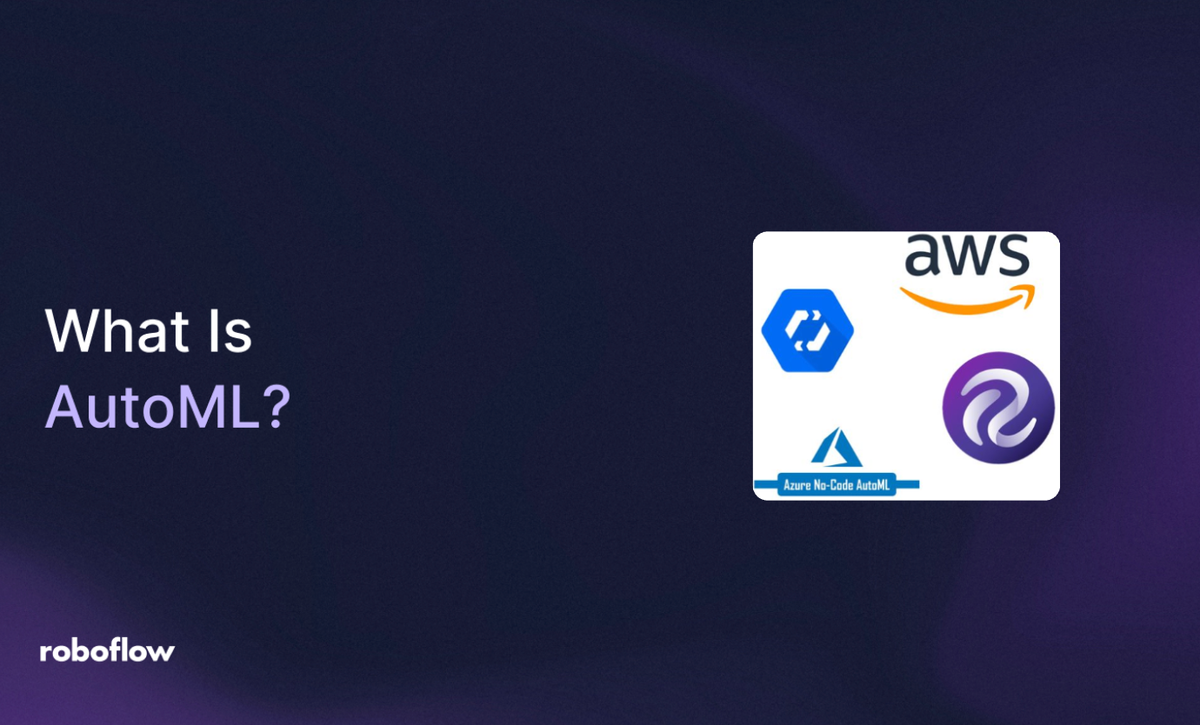
Building powerful machine learning models traditionally requires a deep understanding of data processing, algorithms, tuning hyperparameters, deploying models, and many more steps. All these complexities led us to the idea of AutoML or Automated Machine Learning.
Whether you are new to machine learning or a developer looking to streamline the model building workflow, AutoML is reshaping how AI is built, making it easier, faster, more accessible, and more scalable.
What Is AutoML in AI?
AutoML is the process of automating the process of applying machine learning to any problem. Instead of requiring the work of humans to manually select models, optimize parameters, engineer features, preprocess data, evaluate performance, and any other required step to produce a performant model, AutoML systems can handle all of these tasks for you.
In short, AutoML is a technique that provides one-click to train models that optimize themselves (usually hosted in the cloud). They can be a good starting point, a good baseline, and in some cases a "it just works" solution vs. tuning your own models.
With AutoML, technical barriers are lowered while delivering powerful, performant models. This means anyone can accelerate experimentation, production, and deployment of any AI model for their own needs.
Popular AutoML Tools
- Roboflow: A comprehensive computer vision platform that provides AutoML capabilities for everything you need to build and deploy computer vision applications.
- Google Cloud AutoML: Offers AutoML tools for structured data, sight, and language with integration with Google Cloud
- Amazon SageMaker Autopilot: Using Amazon’s SageMaker Canvas, you can use AutoML tools for data preparation, multi-modality support, built-in visualizations and what-if analysis, and automation support for predictions.
Using AutoML
Roboflow simplifies the entire computer vision pipeline with automation fully built in from end-to-end, from dataset creation, model training, and deployment. If you're doing AutoML in computer vision, Roboflow Train is one of the best ways to get going. Using just a video or set of images, you can create a model that you can use by API or even on-device on the edge.
Here is how Roboflow incorporates AutoML:
- Data processing tools: Easily upload, annotate, and augment datasets. Roboflow helps take care of the preprocessing step with best practices.
- One-click training: Choose your project type (e.g. object detection), select a corresponding model to the project type and hit “Train.” Roboflow will use the model of choice and help fine-tune your data.
- Hyperparameter tuning: Roboflow automatically tunes the training configurations to increase accuracy automatically
- Model deployment: Once the model is finished training, Roboflow provides an easy way to deploy without any technical experience.
How Can I Get Started with AutoML?
After creating a free account, you can select any Project Type for your needs. Popular options include object detection, classification, and segmentation. In this example we will try to detect all of the license plates on various vehicles.
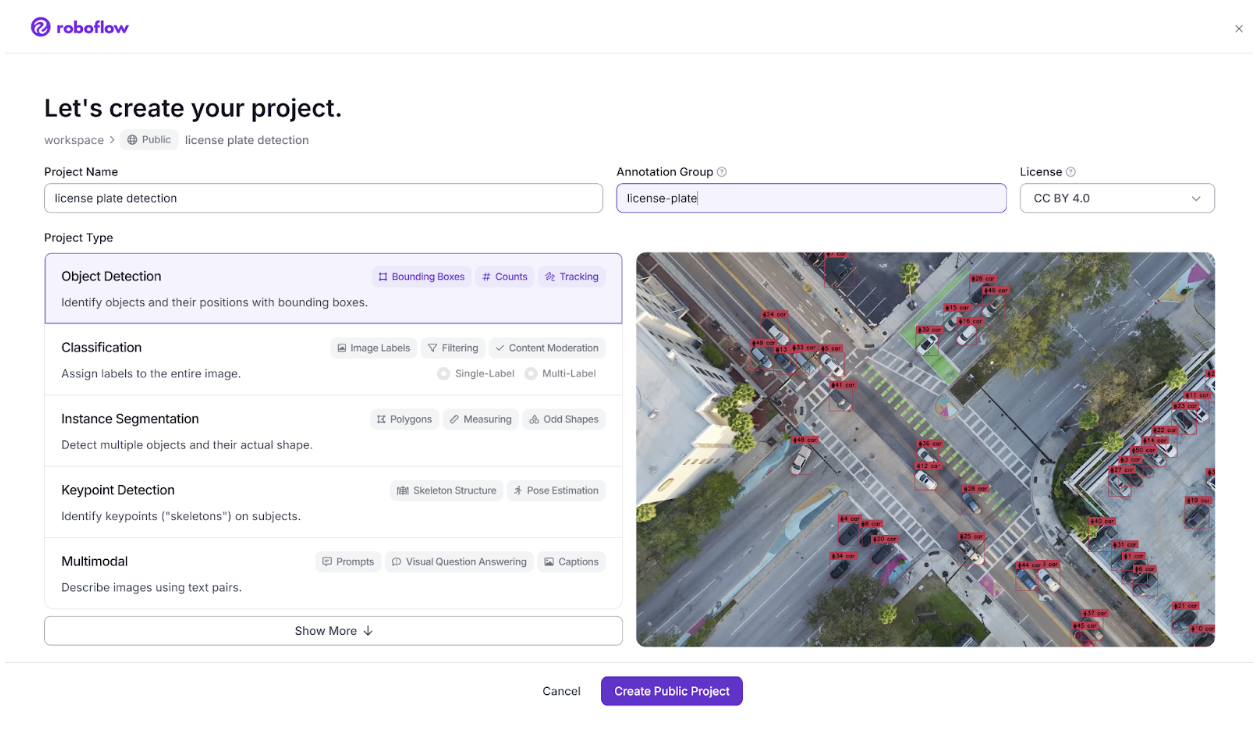
The next step is to upload data for the model to train on. For our example, we want pictures of vehicles with license plates. I do not have any on hand, but thanks to Roboflow, we can easily get data from the Roboflow Universe. I will use this license plate dataset that has everything already labeled for my model. Click on “Fork Dataset” in the top right to use this dataset for your model.
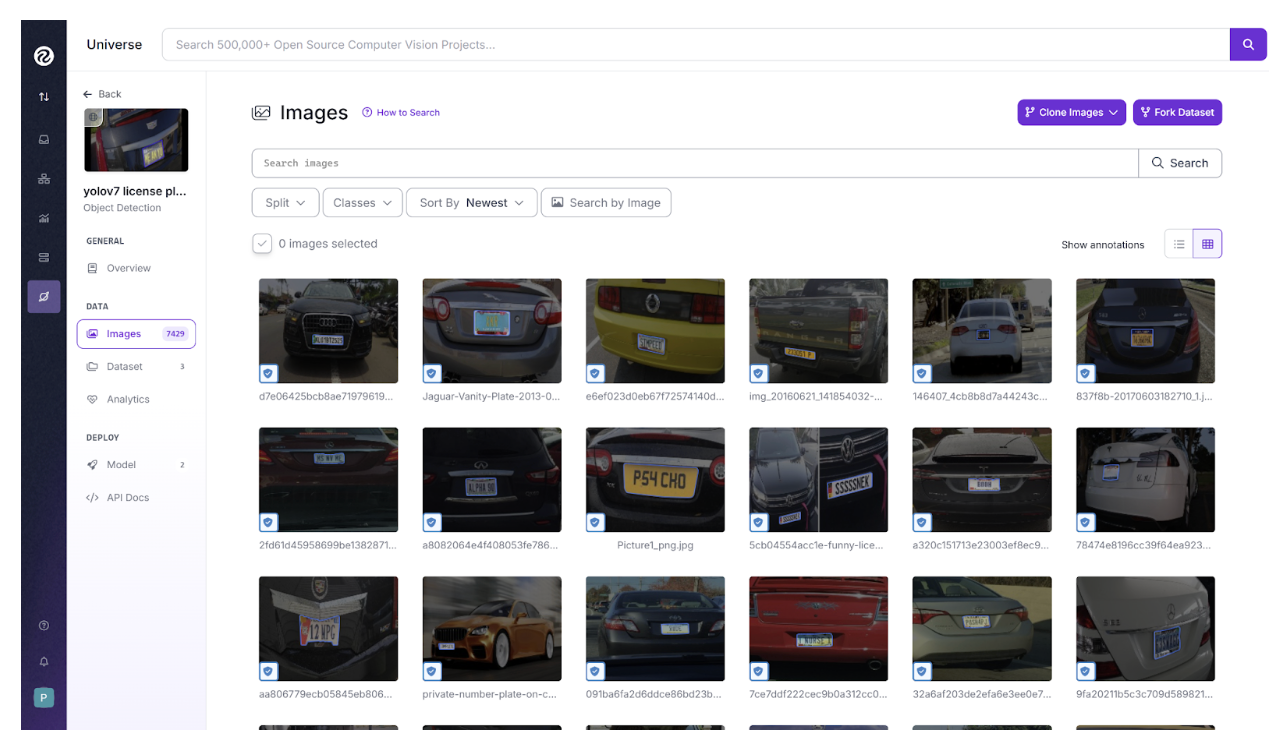
After forking, you have the option to apply data preprocessing and augmentation to the dataset. For the sake of simplicity, we will opt for these steps, but usually it is highly recommended because it usually helps with the model accuraccy. After clicking the “Create” button, the images will be generated for the model to use.
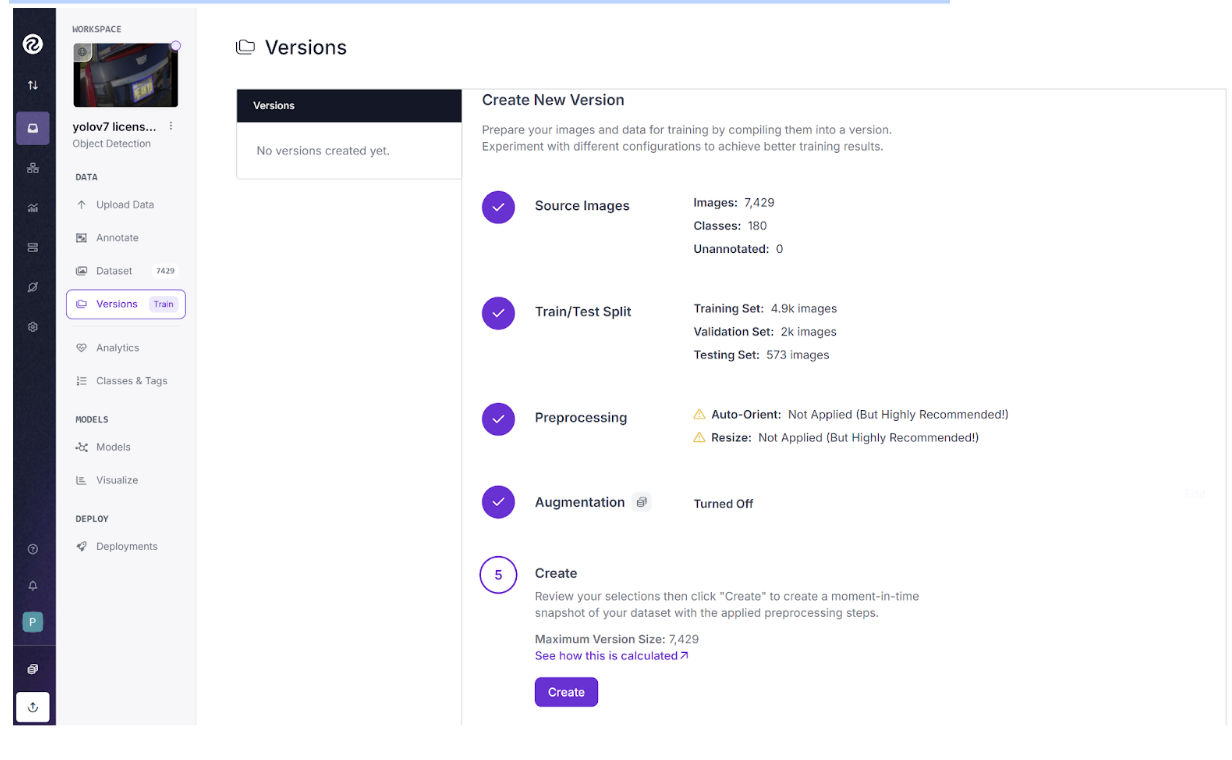
Next, choose a model to use. By clicking the “Custom Train” button, you are able to view the available models to use. There are many models for any computer vision use case. For object detection, Roboflow provides all of the best performant models available to date. In this example, we will use the Roboflow 3.0 model.
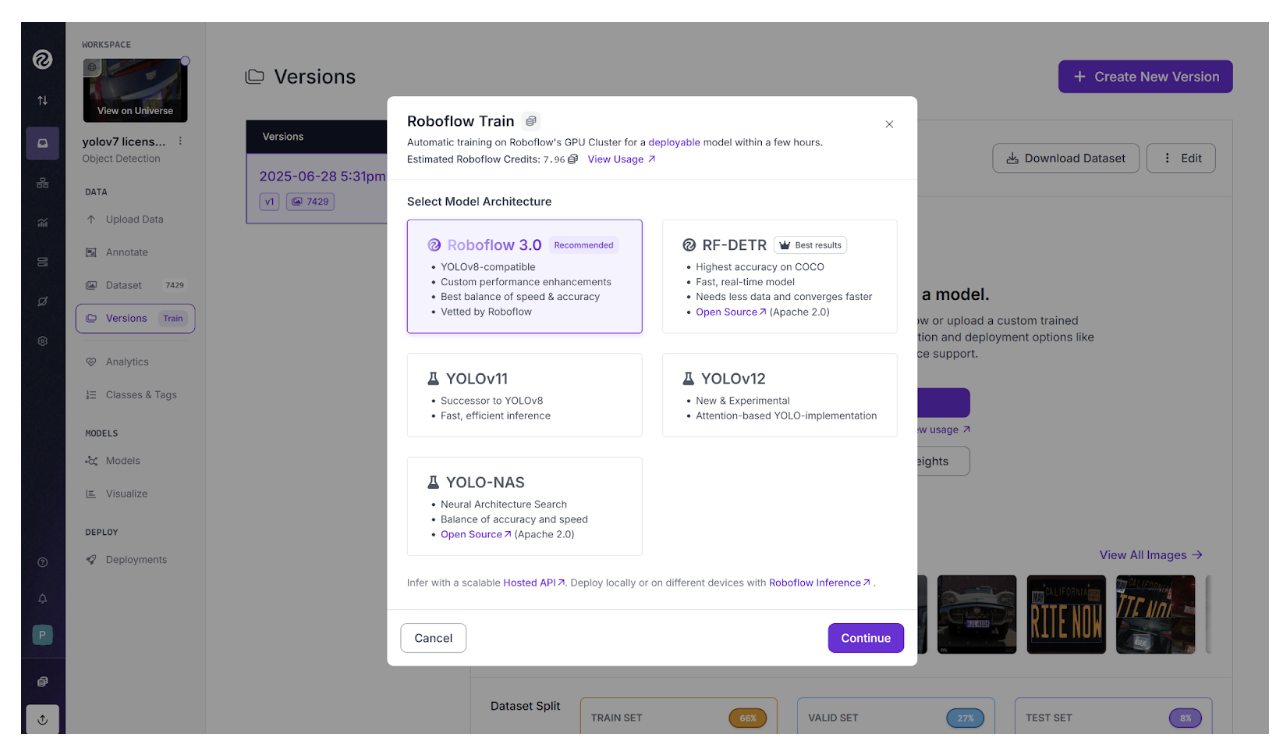
After going through these steps, our model is going to be trained in the cloud. Roboflow will email you when the model is finished training. This usually takes a few hours depending on the dataset size and the model selected. Once the model is done training, the model can be previewed and visualized. If the model is up to your standard, you can easily deploy by clicking “Deploy Model” in the top right.
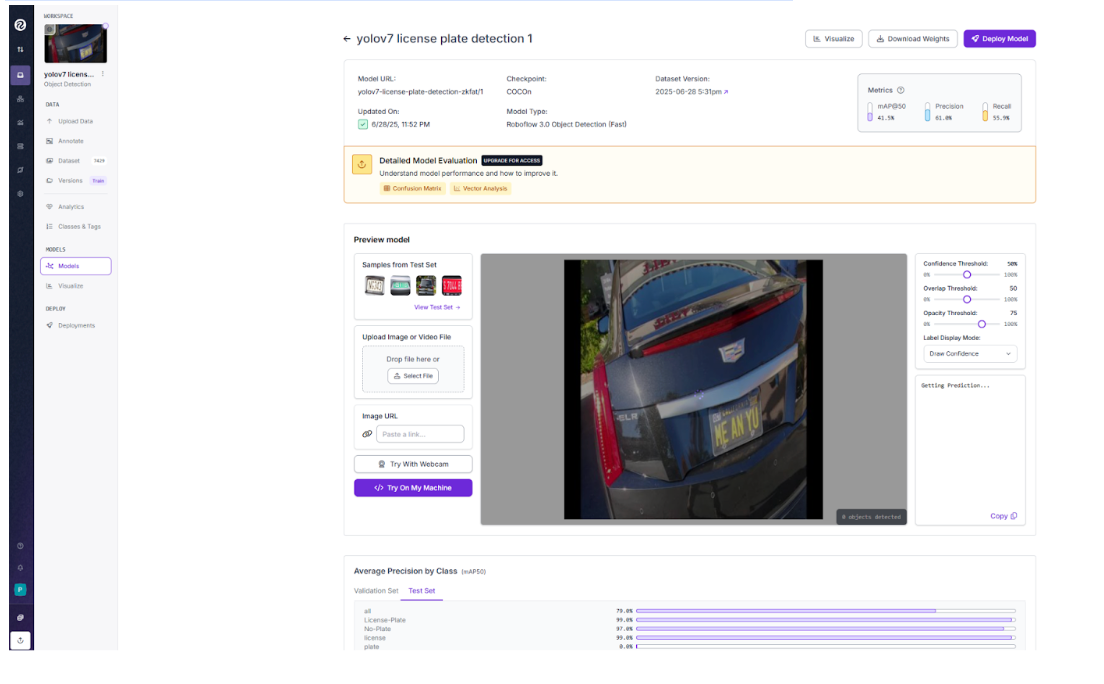
Simplify Computer Vision Model Training with AutoML
AutoML provides a transformative shift in how we build and scale machine learning models. By automating the technical work, AutoML opens the door for wider AI adoption. If you are focused on computer vision, platforms like Roboflow are at the forefront of this movement, providing developers with all the tools they need for AI development. AutoML lets you do more with less. The future of machine learning is automated and already here. Get started for free with Roboflow today.
You might be interested in a review of the major cloud vision AutoML tools.
Cite this Post
Use the following entry to cite this post in your research:
Contributing Writer. (May 1, 2025). What Is AutoML?. Roboflow Blog: https://blog.roboflow.com/what-is-automl/
